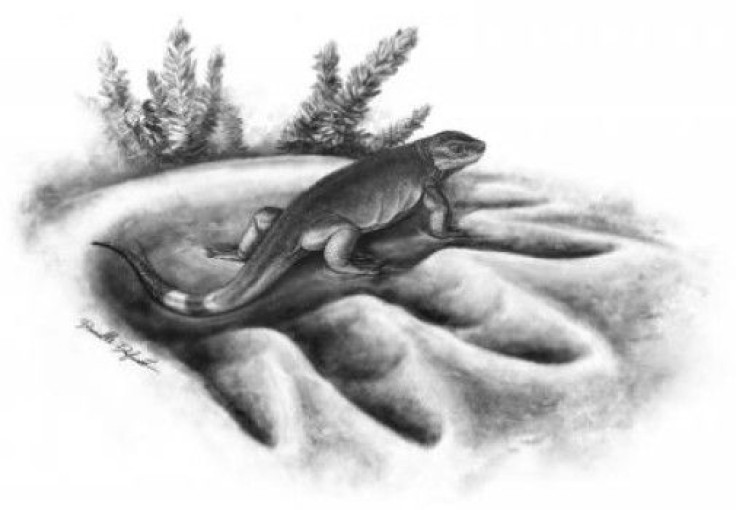300-Million-Year-Old Herbivore Ancestor Found In Kansas, Fossil Shows ‘Colossal Change’ In Ecosystem

A recently discovered 300-million-year-old fossil has shed light on how one carnivorous species helped spawn rhinoceros-sized herbivores.
A new study published in the journal PLOS ONE describes the Eocasea martini -- the fossil of which was found in Kansas and identified by researchers at the University of Toronto. The remains measure nearly 8 inches and consist of a partial skull and a large portion of the vertical column, pelvis and a hind limb.
"Eocasea is one of the oldest relatives of modern mammals and closes a gap of about 20 million years to the next youngest members of the caseid family," Jörg Fröbisch of the Museum für Naturkunde and Humboldt-University in Berlin said in a statement. "This shows that caseid synapsids were much more ancient than previously documented in the fossil record."
The lizard-like animal lived nearly 80 million years before the dinosaurs. Researchers found it belonged to a primitive group of synapsids, a group of animals that included mammalian ancestors. This particular fossil was an ancient nonmammalian synapsid known as a caseid.
"All other members of this group, the caseids, are plant eaters," study leader Robert Reisz, a paleontologist at the University of Toronto told LiveScience. “This one, the oldest, isn't. We see a transformation within the group from an insectivorous animal to a plant-eating animal."
Eocasea is one of the most primitive caseids, which fed on insects and small animals. The fact that the younger members were herbivores is a clear indication that carnivorous species like the Eocasea evolved from them.
"Eocasea is the first animal to start the process that has resulted in a terrestrial ecosystem with many plant eaters supporting fewer and fewer top predators," Reisz said.
The reasons behind the transition lies in the vast amount of plant-based food available at the time.
"The evolution of herbivory was revolutionary to life on land because it meant terrestrial vertebrates could directly access the vast resources provided by terrestrial plants," Reisz said. "These herbivores, in turn, became a major food resource for large land predators."
While the notion of animals transitioning from herbivores to carnivores sounds unique, Reisz told LiveScience that it wasn’t unusual in ancient times.
"One of the great mysteries to my mind is: why did herbivory not happen before and why did it happen independently in several lineages?” he said in a statement. That's what's fascinating about this event. It's the first such occurrence, and it resulted in a colossal change in our terrestrial ecosystem."
© Copyright IBTimes 2024. All rights reserved.












